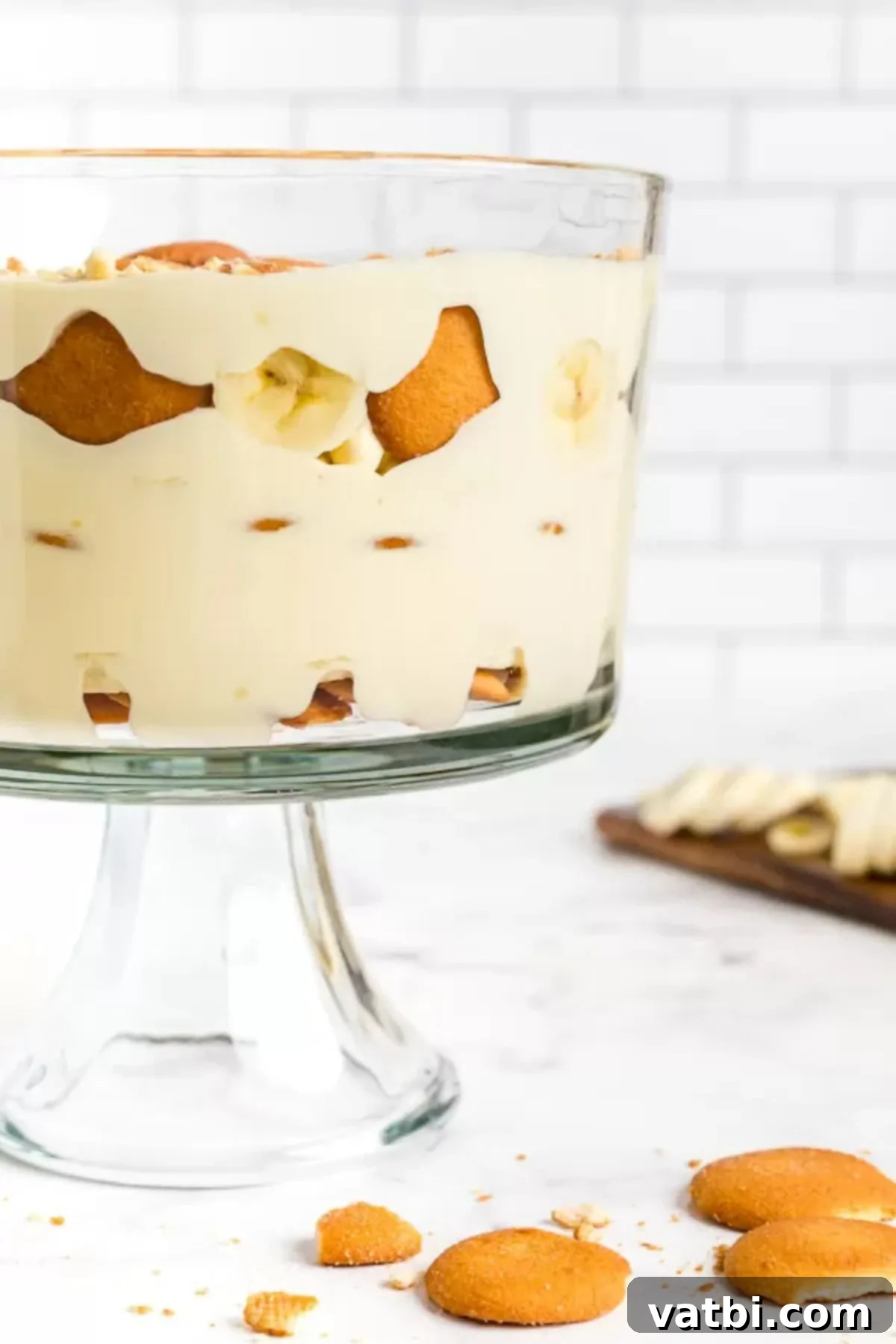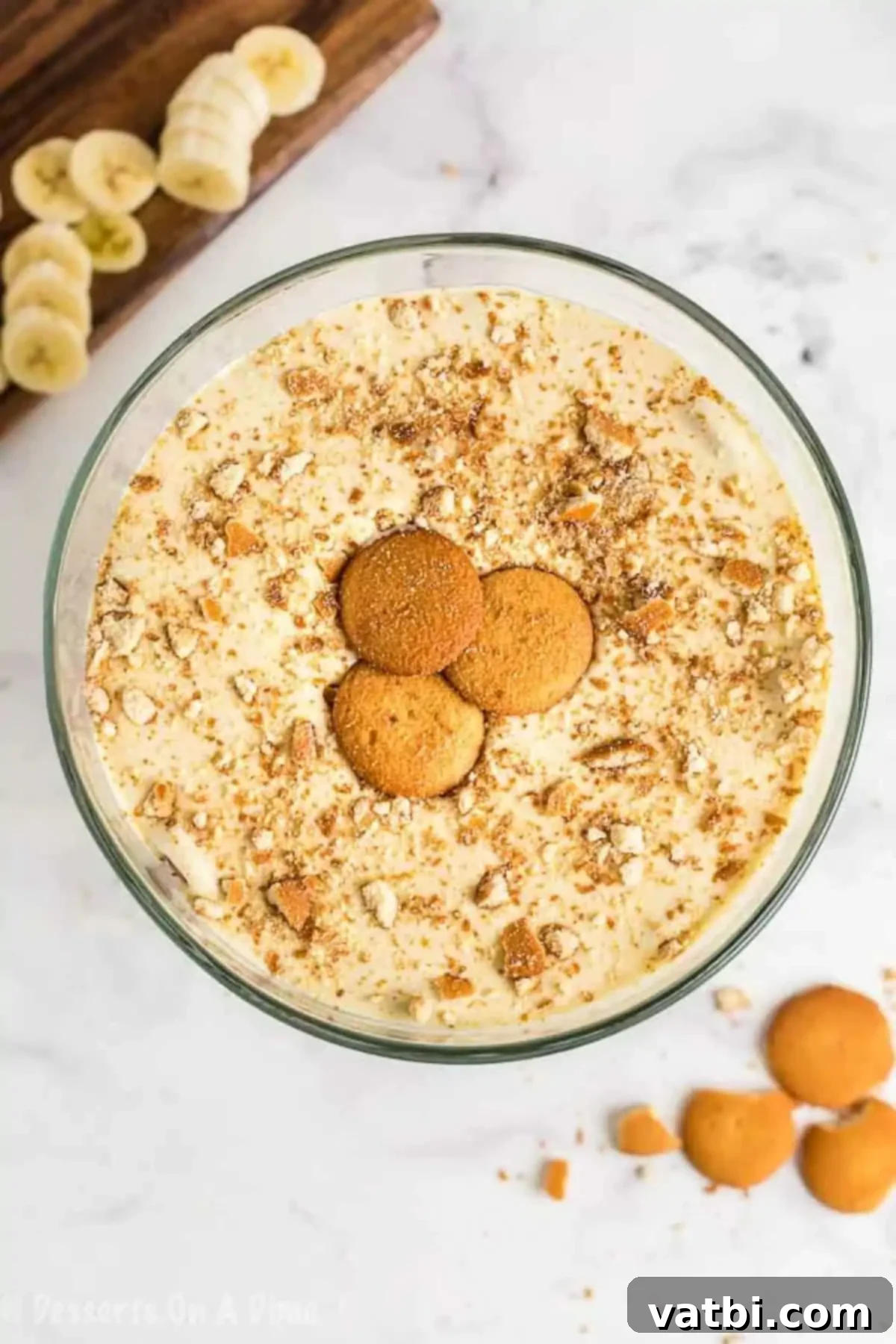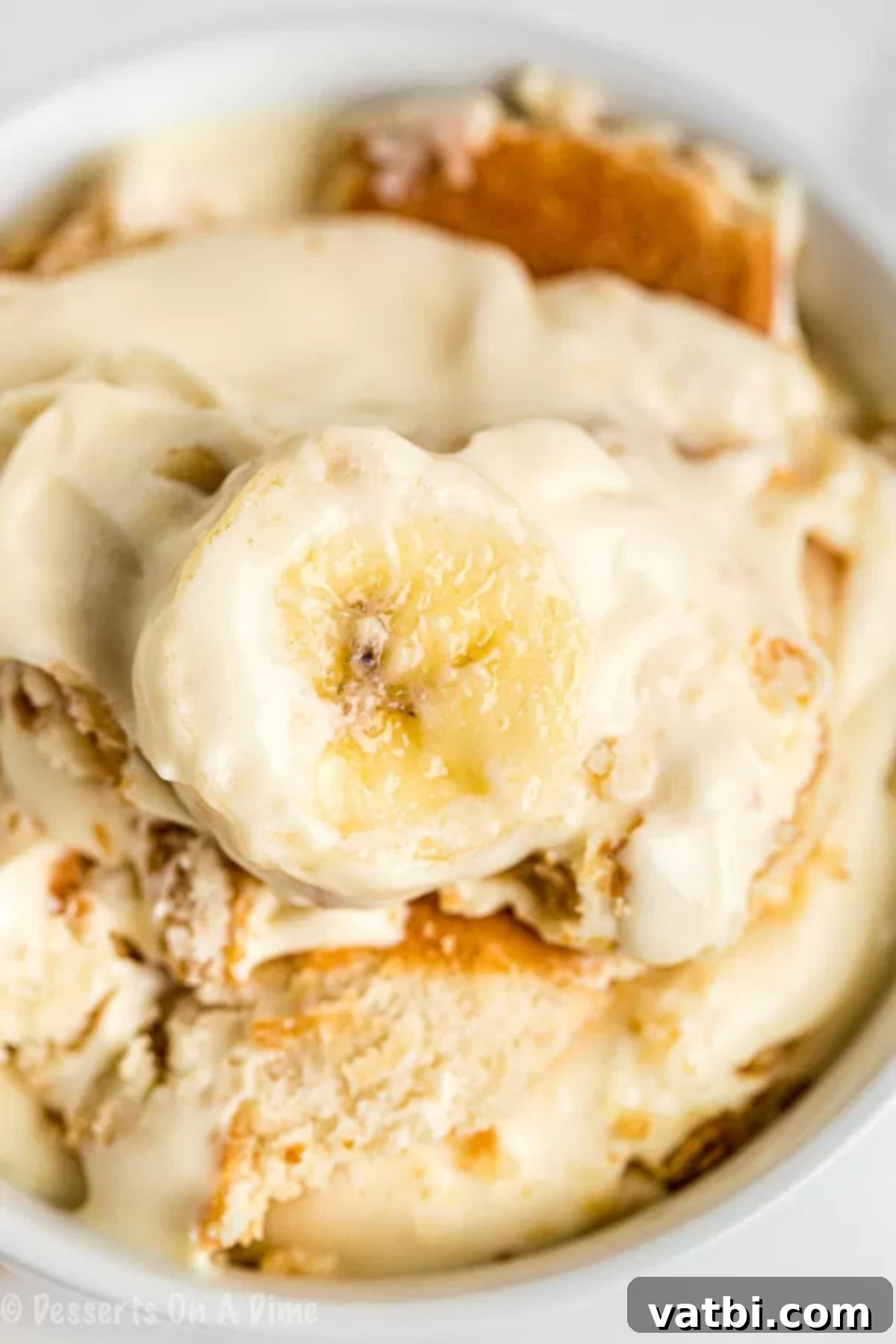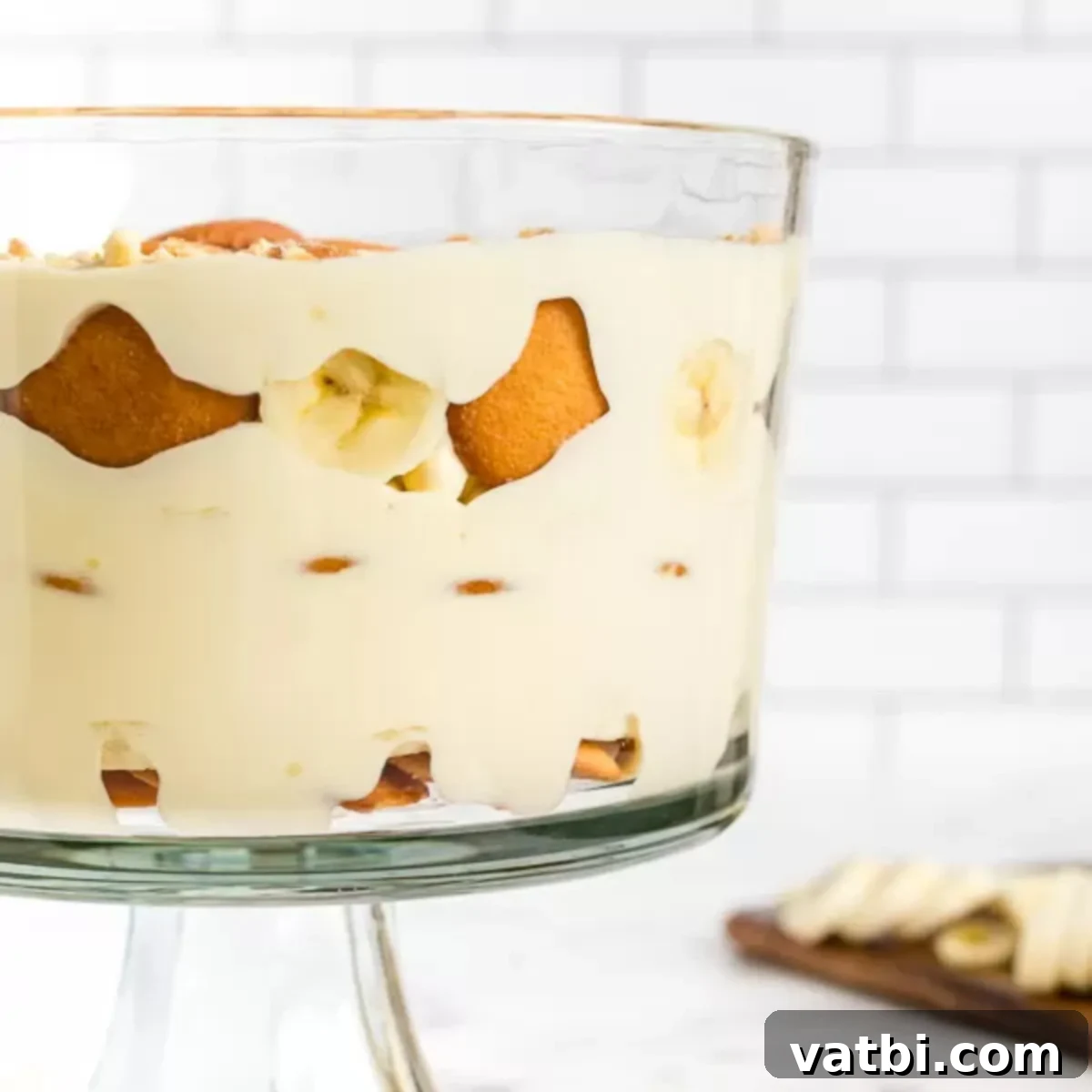Can You Freeze Banana Pudding? The Ultimate Guide for Perfect Flavor & Texture
If you’ve ever found yourself with an abundance of delicious homemade banana pudding and wondered, “Can you freeze banana pudding?“, the excellent news is yes, you absolutely can! Freezing banana pudding is a fantastic way to extend its shelf life, minimize food waste, and ensure you always have a delightful treat ready to enjoy. However, to maintain that signature creamy texture and rich flavor, there are specific steps and considerations you need to follow diligently throughout the freezing and defrosting process.

While homemade banana pudding freezes remarkably well, success lies in understanding how its delicate ingredients react to freezing temperatures. Improper freezing can lead to a watery, grainy, or mushy consistency, and nobody wants that! This comprehensive guide will walk you through the correct methods to freeze leftover banana pudding, ensuring it retains its delightful taste and creamy texture upon thawing. We’ll cover everything from proper preparation and storage techniques to the best way to defrost it, preventing issues like freezer burn and the absorption of undesirable odors.
Beyond freezing, if you’re a banana lover, you’ll also adore these delicious banana recipes, including classic banana cream pie and moist banana bread. And if you’re expanding your freezing prowess, you might also be curious, Can You Freeze Pound Cake? We’ve got answers for that too!
Table of contents
- Why Freeze Banana Pudding?
- Understanding Ingredients and Freezing
- How to Prepare Banana Pudding for Freezing
- How to Freeze Banana Pudding
- How to Defrost Banana Pudding
- Common Issues and Troubleshooting
- Frequently Asked Questions
- More Banana Pudding Desserts
- More Freezer Tips
Why Freeze Banana Pudding?
Freezing banana pudding offers a myriad of benefits that make it a highly recommended practice for any dessert enthusiast. It’s not just about convenience; it’s about maximizing enjoyment and minimizing waste.
- Prevents Food Waste: Have you ever made a large batch of banana pudding for a gathering, only to have leftovers you can’t possibly finish in a few days? Freezing allows you to save those extra portions, preventing them from spoiling and ensuring every delicious spoonful gets to be enjoyed.
- Enjoy Homemade Goodness Anytime: Imagine craving a comforting bowl of banana pudding but not having the time to prepare it from scratch. With frozen portions on hand, you can indulge in that homemade taste whenever the mood strikes, turning a spontaneous craving into an instant delight.
- Perfect for Meal Prep and Batch Cooking: For those who love to plan ahead, freezing banana pudding makes it an ideal dessert for meal prep. You can prepare a large batch, divide it into individual servings, and freeze them. This means less cooking stress when entertaining or simply when you need a quick dessert.
- Convenience: The sheer convenience of having a ready-to-thaw dessert cannot be overstated. It’s perfect for unexpected guests, busy weeknights, or a delightful treat after a long day.
With these practical tips, you can confidently preserve your creamy whipped cream, rich vanilla custard, and delightful banana slices, ensuring your banana pudding mixture will still taste amazing after its time in the freezer.

Understanding Ingredients and Freezing
Before diving into the freezing process, it’s helpful to understand how the primary components of banana pudding react to cold temperatures. This knowledge will inform our freezing strategies to achieve the best results.
- Bananas: Fresh banana slices are the trickiest ingredient. When frozen and thawed, bananas tend to become very soft, watery, and can turn brown. This is why proper preparation (like using lemon juice) and strategic placement are crucial.
- Pudding/Custard Base: The creamy vanilla custard or pudding mixture itself generally freezes well. However, its high water content can lead to the formation of ice crystals, which might alter the smooth texture, making it slightly grainy or watery upon thawing.
- Whipped Cream/Cream Cheese Mixture: If your banana pudding includes a topping made with whipped cream or a cream cheese mixture (like a “no-bake” version), these dairy-rich components can sometimes separate or become slightly watery when thawed. High-fat dairy products tend to fare better.
- Wafers/Cookies: Vanilla wafers or Chessman cookies, a staple in many banana pudding recipes, are prone to becoming soggy and losing their crispness when exposed to moisture during freezing and thawing. This is perhaps the biggest challenge when freezing an assembled pudding.
How to Prepare Banana Pudding for Freezing
Optimal preparation is key to ensuring your frozen banana pudding maintains its delightful qualities. Follow these steps before you even think about putting it in the freezer:
- Cool Completely: This is a non-negotiable step. Ensure your banana pudding has cooled down completely to room temperature before placing it in the freezer. Warm pudding will create condensation inside the container, leading to larger ice crystals, which can ruin the vanilla custard’s smooth consistency and overall texture.
- Treat Banana Slices: To prevent the banana slices from turning brown and becoming too mushy, consider dipping them in a small amount of lemon juice or another acidic fruit juice (like pineapple juice) before adding them to the pudding. This helps to inhibit oxidation.
- Strategic Wafer Placement: If your recipe calls for vanilla wafers, it’s generally best to add them just before serving after the pudding has been defrosted. However, if you must freeze them with the pudding, arrange them in a single layer on top of the pudding rather than folding them throughout. This minimizes their contact with the pudding’s moisture, helping them retain some texture. Opt for sturdier wafers if possible.
- Choose the Right Container: Select an airtight, freezer-safe container. Glass or rigid plastic containers with tight-fitting lids are ideal. Avoid freezer bags for the main pudding mixture, as they offer less protection against crushing and freezer burn, though they can be used for individual banana slices or wafers added later.
- Consider Individual Portions: For ultimate convenience, freezing banana pudding in individual portions is a game-changer. Use small freezer-safe containers, ramekins, or even muffin tins lined with cupcake liners (once frozen, pop them out and store in a larger container) for single servings.
How to Freeze Banana Pudding
Once your banana pudding is properly prepared, follow these detailed steps to freeze it effectively, whether you’re preserving extra or making a large batch ahead of time:
- Step 1: Ensure Complete Cooling. As mentioned, this is paramount. Allow the pudding to cool fully at room temperature, then transfer it to the refrigerator for an additional hour or two to ensure it’s thoroughly chilled before moving to the freezer. This prevents large ice crystal formation.
- Step 2: Transfer to an Airtight Container. Spoon your cooled banana pudding into your chosen freezer-safe container(s). If you are freezing with wafers, remember to place them strategically on top, not mixed in.
- Step 3: Avoid Overfilling. Do not fill the container to the very brim. Leave about half an inch of headspace, as the pudding mixture will expand slightly as it freezes. Overfilling can lead to cracked containers or lids popping off, exposing your pudding to freezer burn.
- Step 4: Create a Protective Layer. Before securing the lid, press a piece of plastic wrap directly onto the surface of the pudding. This creates a barrier against air, preventing freezer burn and ensuring the top layer of pudding doesn’t dry out or develop an icy film.
- Step 5: Seal the Container Tightly. Place the lid firmly on the container. For an extra layer of protection, especially for longer storage, you can wrap the entire container in aluminum foil. This further insulates the pudding from temperature fluctuations and prevents freezer odors from permeating your dessert.
- Step 6: Label and Date. Using a permanent marker, label your container with the contents (“Banana Pudding”) and the date it was frozen. This is crucial for tracking its freshness and ensuring you consume it within its optimal freezer life.
- Step 7: Place in the Freezer. Position the labeled container in the coldest part of your freezer. Ensure it’s placed on a flat surface until completely solid to prevent any shifting or spillage.
By diligently following these simple yet crucial steps, you can ensure your frozen banana pudding retains its integrity in terms of flavor and texture, ready to be enjoyed at a later date. Remember, the goal is to minimize air exposure and rapid temperature changes.

How to Defrost Banana Pudding
The defrosting process for banana pudding is just as crucial as the freezing one. Rushing this step can undo all your careful preparation. Patience is key to preserving that creamy texture and delicious taste. Here are the most effective methods for defrosting banana pudding:
- Step 1: Transfer to the Refrigerator. The safest and best method for defrosting banana pudding is to transfer it directly from the freezer to the refrigerator. This allows for a slow, gradual thaw, which helps maintain the pudding’s delicate structure and prevents unwanted separation or sogginess.
- Step 2: Allow Ample Time. Depending on the size and thickness of the pudding batch, this can take several hours or even overnight (typically 8-12 hours for a large container). Smaller, individual portions will defrost more quickly, often within 3-5 hours. Plan accordingly to ensure it’s fully thawed before you want to serve it.
- Step 3: Quick Defrost (Cold Water Method – Optional). If you need to defrost the pudding more quickly, you can immerse the sealed, airtight container of pudding in a bowl of cold water. Change the water every 30 minutes to keep it cold. This method speeds up thawing without compromising texture as much as warmer methods. Crucially, avoid warm or hot water, as this can lead to uneven thawing and negatively impact the pudding’s texture and quality due to its high water content.
- Step 4: Room Temperature Softening (If Needed). If the banana pudding is still slightly icy or very firm after refrigerating, you can allow the bowl to sit at room temperature for 15 to 20 minutes before serving. This brief period can help it reach a perfect, scoopable consistency.
Important Note: Never use a microwave or hot water to speed up the defrosting of banana pudding. The rapid heating can cause the pudding base to separate, the bananas to become excessively mushy, and the overall texture to turn unappetizingly watery or grainy. Microwaving can also create hot spots, potentially leading to food safety concerns.
By patiently allowing your frozen banana pudding to defrost completely in the fridge, you can ensure it keeps its mouth-watering flavor and creamy texture. Once thoroughly defrosted, this traditional delicacy tastes as good as it did when it was first prepared. For an extra touch, you might want to give it a gentle stir and add fresh wafers or whipped cream just before serving.
Common Issues and Troubleshooting
Even with the best intentions, freezing and thawing can sometimes present challenges. Here’s how to address some common issues:
- Mushy Wafers: This is the most frequent complaint. If you froze the wafers with the pudding and they’ve turned soft, your best bet is to scrape them off and add a fresh layer of vanilla wafers or shortbread cookies just before serving. This provides the desired crunch.
- Slightly Watery Pudding: A common issue if ice crystals formed. Gently stir the pudding after it’s fully defrosted. In many cases, a good stir can re-incorporate any separated liquid and restore some of the creaminess. If it’s still too watery, consider serving it slightly chilled as a sauce or topping for other desserts.
- Brown Bananas: If the bananas weren’t treated with lemon juice, they might oxidize and brown. While not harmful, it’s not visually appealing. For future batches, ensure proper treatment. For an already thawed batch, you can gently remove the darkest slices or simply embrace the natural look – the flavor should still be there.
- Freezer Burn: This usually appears as dry, discolored patches. It’s a sign that air has reached the pudding. If only small areas are affected, you can scrape them off. For severe freezer burn, the flavor and texture will be significantly compromised, and it might be best to discard it. Prevent this by ensuring multiple layers of airtight sealing (plastic wrap directly on the surface, then lid, then foil).
Frequently Asked Questions
Yes, you can freeze banana pudding with Nilla wafers or Chessman cookies, but it’s important to manage expectations regarding texture. The wafers will likely lose their crispness and become soft or mushy after freezing and thawing, regardless of how carefully you freeze them. To minimize this, we recommend placing the wafers in a single layer on top of the pudding rather than folding them throughout. This limits their exposure to the pudding’s moisture. For the best results, many prefer to add fresh, crispy wafers or cookies just before serving the defrosted pudding. If you do freeze them, opt for sturdy vanilla wafers that tend to hold up slightly better than more delicate varieties.
The shelf life of homemade banana pudding varies depending on its ingredients and storage conditions. Generally:
- In the Refrigerator: If your homemade banana pudding contains dairy ingredients like milk, cream, or cool whip, it should be consumed within 3 to 4 days when stored in an airtight container in the refrigerator. Dairy products are highly perishable and can spoil quickly. If your pudding is dairy-free, you might be able to extend its refrigerator life to about a week, provided it’s kept in a well-sealed container.
- In the Freezer: When properly stored in an airtight, freezer-safe container, banana pudding can be kept in the freezer for up to 1 to 2 months for optimal quality. While it might remain safe to eat for longer (up to 3 months), its texture and flavor can start to degrade past the 2-month mark.
Always trust your senses when it comes to food safety. If the pudding looks or smells off, or if you see any mold, it’s best to discard it, regardless of how long it’s been stored. When in doubt, throw it out!
More Banana Pudding Desserts
If you’re a true banana pudding aficionado, you’ll love these creative twists on the classic dessert:
- Banana Pudding Fluff Recipe
- Banana Pudding Cookies Recipe
- Banana Pudding Poke Cake Recipe
More Freezer Tips
Mastering the art of freezing desserts can revolutionize your kitchen habits. Check out these additional freezer tips for other sweet treats:
- How to Freeze Cookie Dough
- Can You Freeze Fudge
- Can you Freeze Cake Pops
Try freezing banana pudding today and unlock a world of sweet, convenient treats anytime you desire. We encourage you to follow these detailed steps and experience the joy of perfectly preserved homemade banana pudding. Then, leave a comment below and let us know how your frozen banana pudding turned out!
